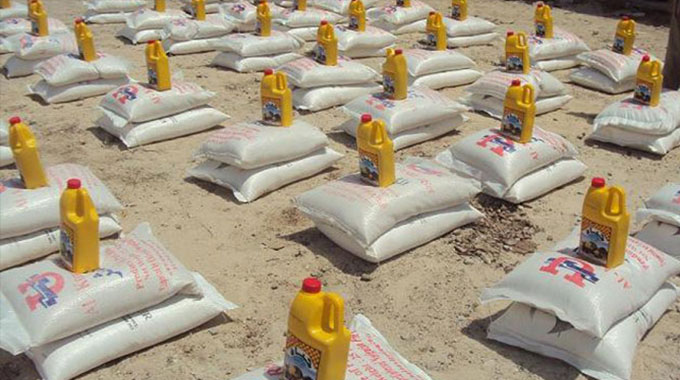Zim among WFP aid hotspots for 2020

Nqobile Tshili, Chronicle Reporter
THE World Food Programme (WFP) has identified Zimbabwe as one of its 2020 aid hotspots due to the devastating effects of climate change induced drought.
WFP is targeting to assist 4,1 million food insecure Zimbabweans this year while aiming to raise US$10 billion to fully fund all of its operations in more than 80 countries.
The country is experiencing one of the worst droughts since it attained independence 40 years ago due to successive poor rainfalls in the 2018/19 and 2019/2020 rainy seasons.
In a statement on Twitter WFP said: “Zimbabwe is high on @WFP’s list of Global #Hunger Hotspots in 2020, indicating that it is one of the world’s most critical food emergencies. Of the 15 regions listed, nine are in Sub-Saharan Africa.”
Other hotspot countries include Democratic Republic of Congo, South Sudan and Mali.
Due to effects of climate change most parts of Zimbabwe have not received significant rains in the 2019/2020 rainy season creating fears of a catastrophic drought.
Already farmers have lamented death of livestock while communities have little to eat with others solely depending on Government handouts.
The global humanitarian organisation attributed Zimbabwe’s drought situation to far reaching effects of climate change suppressing crop production.
“Zimbabwe is experiencing its worst drought in decades, with temperatures hitting over 40 degrees Celsius. Food production has been severely affected. Driven by climate change, the drought is exacerbating Zimbabwe’s severe economic crisis and causing a humanitarian emergency characterised by hyperinflation and rising food insecurity,” reads a WFP statement.
WFP said the 2019/20 farming period is expected to be lean as cereal production could fall by 50 percent.
The organisation said from this month it will double its community capacitation projects as well as food distribution to vulnerable communities in the country.
“Food-insecurity levels are the highest in a decade. An estimated 7,7 million people which is about half the country’s population, is food insecure, with the 2019 cereal harvest falling more than 50 percent short of needs for the 2019-20 lean season. WFP will nearly double its assistance to reach up to 4,1 million of the hardest-hit Zimbabweans. It will switch to distributing food in rural areas from January due to concerns over hyperinflation and reduced availability of commodities in rural markets. WFP is supporting efforts to boost communities’ resilience to crisis, from small dams to retain precious water to vegetable gardens to grow crops,” reads the statement.
From the 7,7 million food insecure citizens 5,5 million of them live in rural areas while 2,2 million are urbanites. — @nqotshili.










Comments